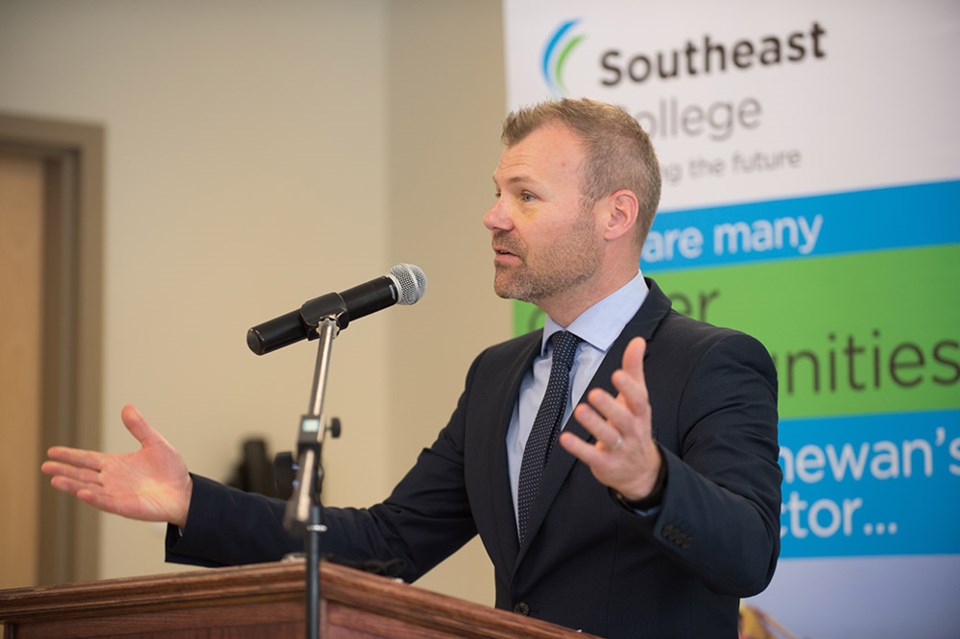Saskatchewan had been shifting towards natural gas-fired power generation, but a change in carbon tax regulation for new power plants of that nature announced by the federal Liberal government has thrown a monkey wrench into the strategy, and could have wide-ranging impacts on the province’s energy mix going forward.
It could even mean a continuation of coal, using carbon capture and storage and cause SaskPower to reconsider its planned upcoming Moose Jaw power station, to be fuelled by natural gas.
Environment Minister Dustin Duncan, who also holds the portfolio of Minister Responsible for SaskPower, explained these implications on July 8 by phone from Weyburn.
He pointed out that the initial regulations that were announced in December, and the province had been consulting with the feds for the last six months, were not what they saw come out in June. Federal Environment Minister Catherine McKenna met with provincial environment ministers, yet didn’t tell them about the changes.
Duncan said Saskatchewan found out about them via a press release from the federal government the following day.
“This is completely different from what was contemplated,” he said.
The issue at hand is the carbon dioxide emissions of what is known as combined cycle natural gas-fired power plants. A simple cycle natural gas power plant burns the gas to heat a boiler, and the steam passes through the generator once. Plants like that are used at Spy Hill and North Battleford, among other places, as peaking plants when the utility needs additional power right away.
But a combined cycle plant is much more efficient, capturing heat that would otherwise be unused, and using it to create more power. They are up to 50 per cent more efficient, according to GE. The result is a much more energy efficient powerplant that is used for baseload power. Northland Power built a 260-megawatt facility of this type at North Battleford in 2013 to provide power for SaskPower, and SaskPower itself is currently completing the 360-megawatt Chinook Power Station at Swift Current.
Duncan explained that when it comes to coal-fired power, Saskatchewan’s coal plants generally put out 1,100 tonnes of CO2 per gigawatt hour (GWh) of power produced. We must pay carbon tax on anything over 800 tonnes. That carbon tax is currently $20 per tonne now, but ratchets up by $10 each year to $50 per tonne in 2022, and Duncan does not expect it will stop there, despite what McKenna has been saying.
By 2022, SaskPower is expected to have paid cumulatively over $500 million in carbon taxes as a result.
Going past 2030, coal plants can only emit 420 tonnes per GWh, which effectively means they must have carbon capture and storage applied.
But a combined cycle natural gas plant produces typically 370 tonnes per GWh, which is one of its key points.
“The cost equation wasn’t going to be that onerous,” Duncan said.
The new rules will see any new combined cycle natural gas power plant that goes into operation after 2021 have the carbon tax applied, on a sliding scale that will reduce the exemption to zero by 2030.
Since the proposed Moose Jaw power station is not yet in the request for proposals stage, it would be directly affected by these new rules, but Chinook and Northland would not.
“We’ve got to put pause on the Moose Jaw plant,” he said.
Duncan said the federal government had been implying that everyone shouldn’t “dash to gas,” and now we know why. The federal government is pushing renewables and hydro power.
“We can’t bring on renewables without baseload to support it,” he said, noting “They want to drive us to more hydro.”
Manitoba is the most likely place to get more hydro power, but Duncan said this new regulation substantially damages this province’s negotiating power with our neighbour to the east. “We have no bargaining power with Manitoba,” he said.
He noted that some people are concerned with the environmental damage caused by large-scale hydro. “The notion of cheap hydro is antiquated,” he said.
And then there is the question of how Manitoba would be able to supply such large quantities of power to this province, with Duncan saying we would need to upgrade our grid interconnects.
Other options could be small modular nuclear reactors, but they’re a long ways off, or coal with CCS.
Duncan said, “The regs don’t only put pause on future natural gas, it also will likely change the spread that currently exists between gas and CCS. Too early to say how much it tightens up, but it might be good news to CCS.”



